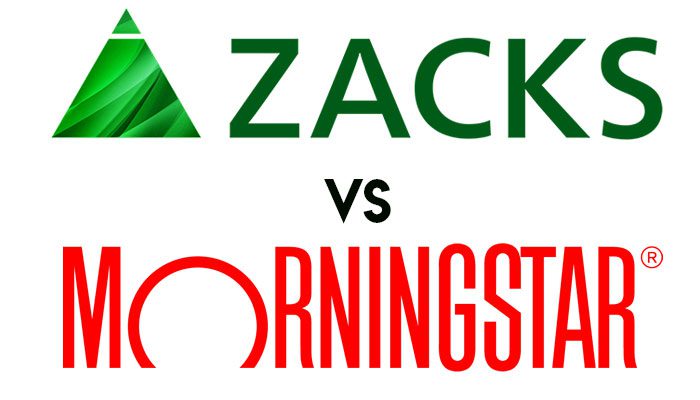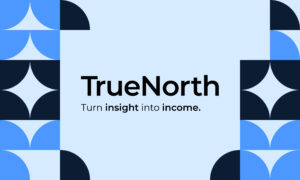When it comes to stock research and analysis, there are many tools available to investors. Two of the most popular options are Zacks and Morningstar. In this blog post, we will compare Zacks vs Morningstar head to head to determine which platform is right for you.
What is Zacks?
Zacks Investment Research is an investment research firm that uses statistical models to predict stock prices. The firm was founded by Len Zacks, an MIT-educated economist, who believed that earnings estimate revisions are the most powerful force affecting stock prices.
Founded on this belief, Zacks has developed a stock-picking system, known as the Zacks Rank, which uses four criteria to classify stocks into five groups. The four criteria are agreement, magnitude, upside, and surprise. Zacks is transparent about its stock-picking formula, and its approach to investing is based solely on analytics, which helps it avoid providing emotionally-driven advice to its subscribers.
This stock-picking focus makes Zacks a great candidate for mid-term stock traders looking for purely mathematical analysis, with an emphasis on ‘earnings per share-related metrics.
What is Morningstar?
Morningstar is another financial research and analysis firm that offers a variety of products and services for investors. The company was founded in 1984 by Joe Mansueto, and it is headquartered in Chicago, Illinois.
One of the key features of Morningstar is its star rating system, which ranks stocks on a scale of 1 to 5 based on their potential for future growth. Morningstar uses a proprietary algorithm to calculate its star ratings, based on a fund’s historical risk-adjusted returns, and it updates the ratings monthly.
Morningstar Investor is a premium offering that provides investors with the resources they need to make informed investment decisions. It is designed primarily for self-directed investors and is best suited for those who prefer to invest through mutual funds. The platform is best known for its Portfolio X-Ray tool, which takes a mutual fund’s quarterly SEC reporting of their individual stock ownership and uses it to determine an investor’s true asset allocation. This can be useful for identifying excessive allocations in certain stocks and ensuring that an investor’s portfolio is properly diversified.
Morningstar also offers stock screeners that can help investors find investments that match their goals, and risk tolerance, and have Morningstar ratings to support their decisions. The platform includes a variety of screeners, including ones for stocks, mutual funds, and ETFs. Morningstar also offers an ESG screener, which is a specialty tool that helps investors find investments that meet environmental, sustainability, and governance guidelines.
In addition to its stock screeners, Morningstar also offers a portfolio monitoring tool that provides regular updates on an investor’s portfolio performance. This can help investors keep track of how their investments are performing and make informed decisions about their portfolios. Morningstar also has a mobile app for iOS and Android devices, which allows investors to access their accounts and manage their investments on the go. The app includes many of the same features as the website, including the ability to sync portfolios and access Morningstar’s analyst ratings and insights.
Zacks vs Morningstar: Comparing the Prices
In terms of pricing, Zacks offers three subscription plans for individual investors: free membership, premium, and ultimate. The free membership includes access to exclusive resources such as the daily e-newsletter and portfolio tracker. The premium subscription at $249 annually unlocks a suite of powerful tools and research, including the Zacks #1 Stock List and equity research reports. The ultimate subscription includes everything in the premium plan, as well as access to all of Zacks’ private portfolios and investment services, including long-term investor services, shorter-term trading services, and “innovator” services focused on cutting-edge themes. The ultimate subscription comes with a hefty price tag of $2,995 annually.
With the 30-day free trial, it’s risk-free to get started with Zacks Premium today!
Similarly, Morningstar also provides some of the basics at no cost; access to Morningstar’s star ratings, stock screeners, and market commentary. But to unlock all of what Morningstar has to offer, ‘Morningstar Investor’ the premium subscription includes access to additional features and tools, such as the sought-after X-ray portfolio management tool, and expert analysis.
This premium service offering from Morningstar comes with a 7-day free trial and just $199 annually. Click here to take advantage of this exclusive offering.
Zacks vs Morningstar: Which is the Best Option?
Zacks and Morningstar are two of the most highly regarded companies in the investment industry. Both offer a range of tools and services to help investors make informed decisions and manage their portfolios effectively.
Zacks is particularly well-suited for investors who want to focus on individual stocks and take technical momentum and year-over-year earnings growth into account when making investment decisions. Meanwhile, Morningstar is ideal for long-term investors who want to build a portfolio primarily from mutual funds and ETFs. The company’s metrics are easy to understand and directly comparable between funds, and its screeners and fund comparison tools are excellent for comparing funds head-to-head. In short, whether you’re a short-term trader or a long-term investor, Zacks and Morningstar are both excellent platforms that can help you achieve your financial goals.


































